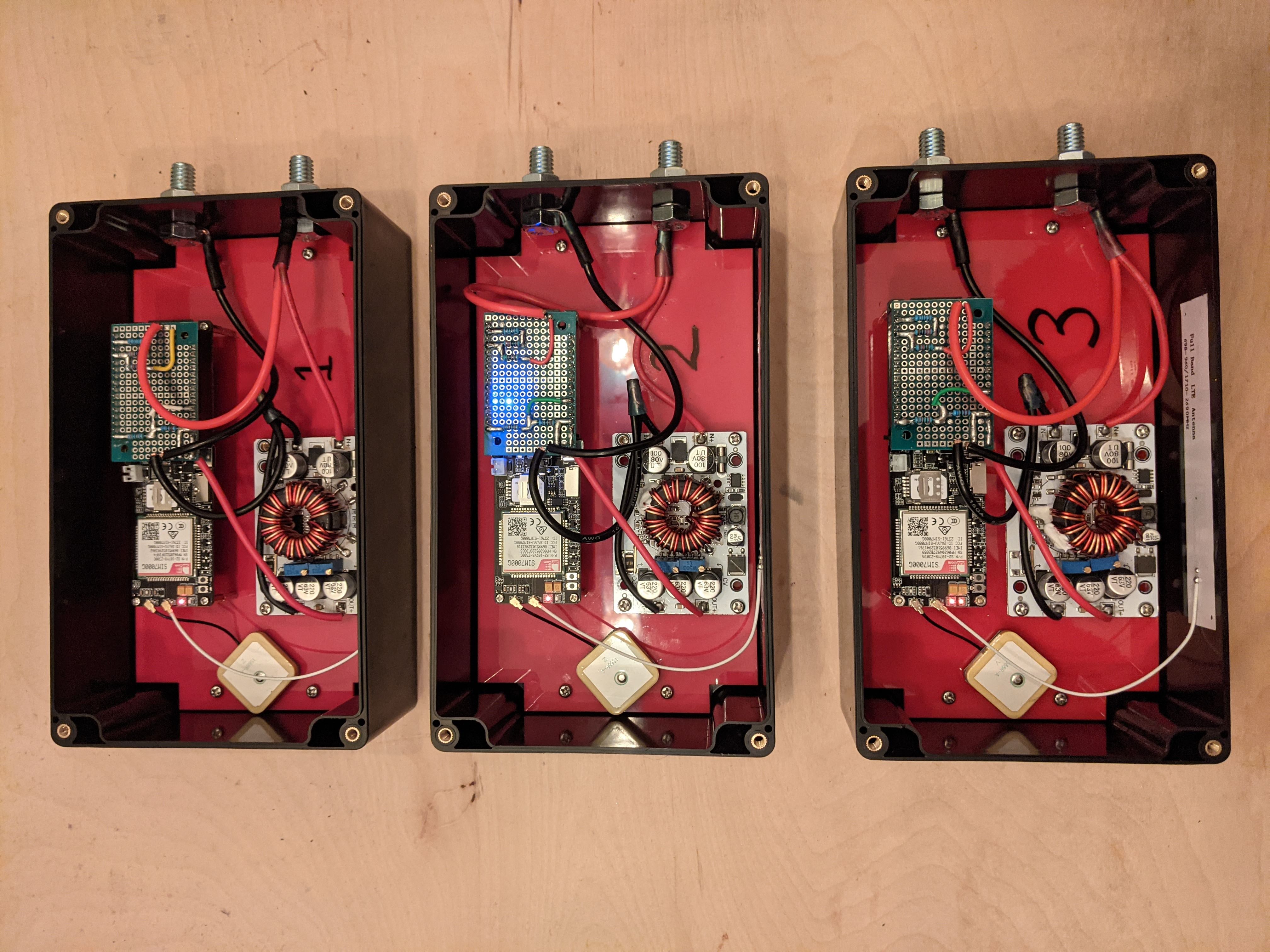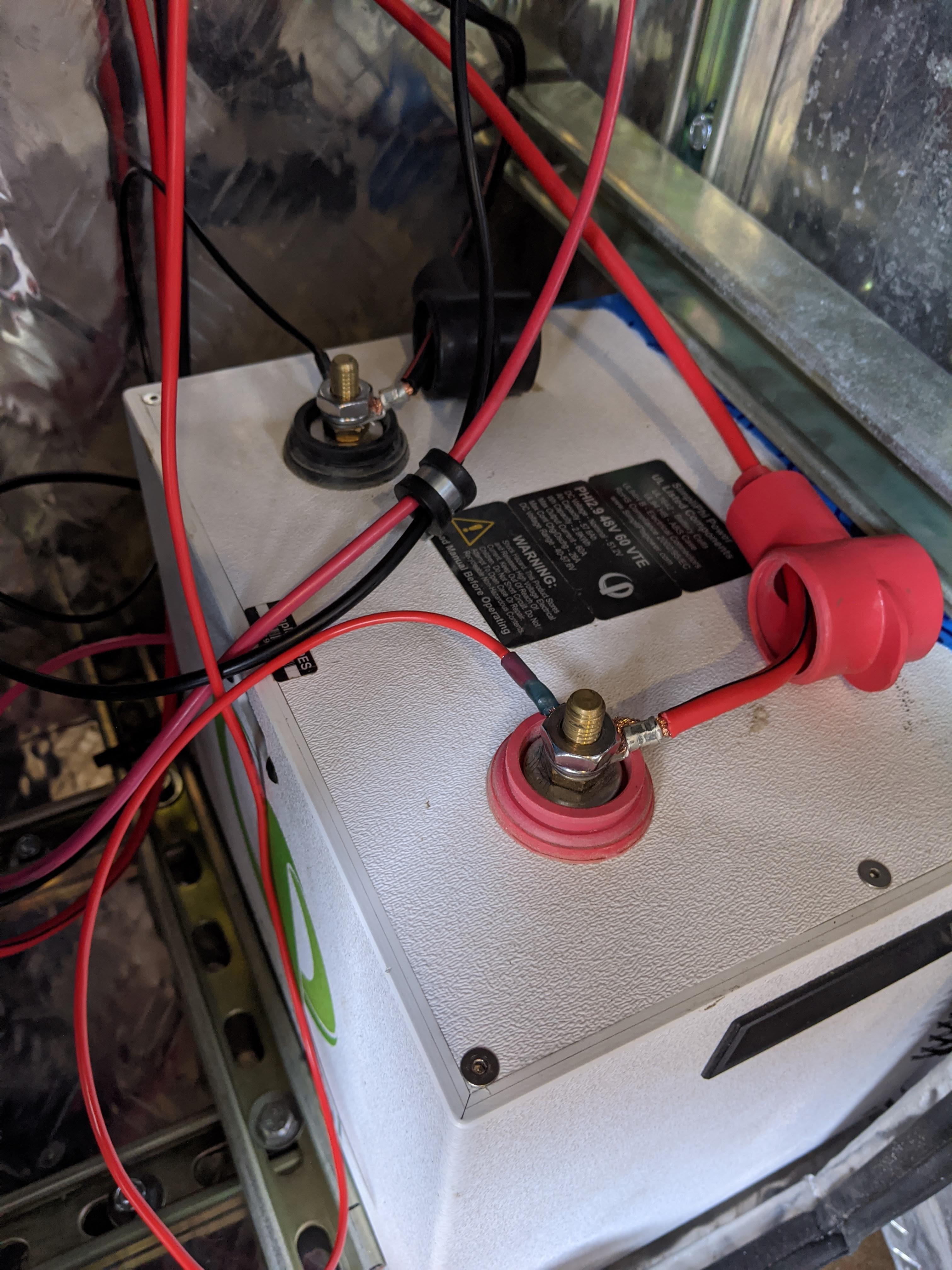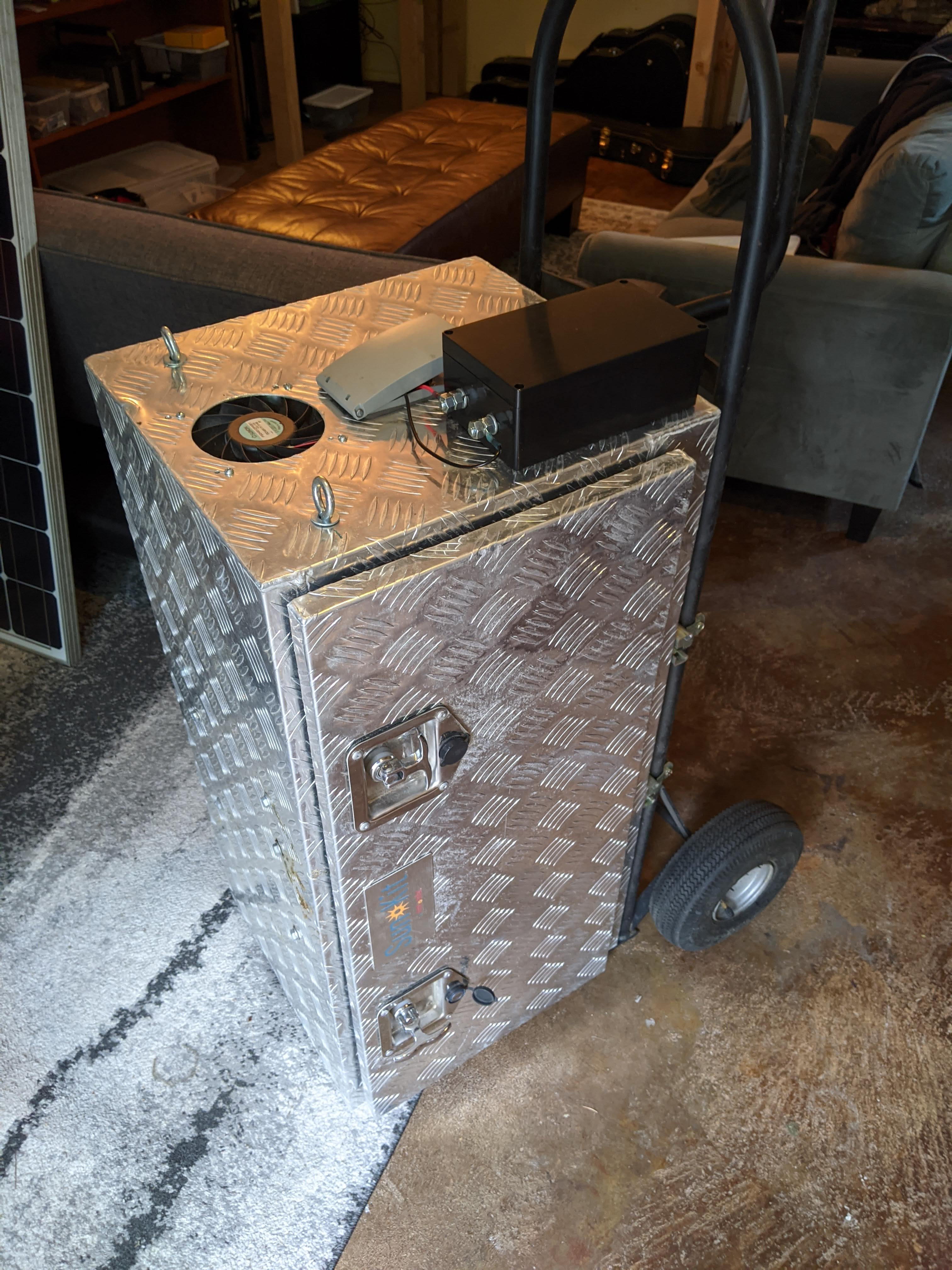Vampire
The Vampire (Volts and AMPs In REaltime) is an open-hardware IoT device for tracking the energy state and geolocation of solar battery systems. It is developed by Interstitial in collaboration with The Footprint Project. A fully integrated DFM model is currently under development - until then, the prototype version can be constructed using commercially available development boards and hobbyist-level electronics.
Prototype
The bill of materials (BOM) for this build is as follows:
- LILYGO® TTGO T-SIM7000G
- Boost-Buck Converter
- 18650 LiPo Battery
- Cat-M1/NB-IoT SIM Card
- Zulkit Waterproof Enclosure (200x120x75mm)
- Some nuts, bolts, standoffs and machine screws to assemble it all
The total BOM cost is about $70 USD.
Interface Board
The interface board can be made of standard perfboard with 0.1" pitch. The electrical schematic for the board is accessible via the GitHub repo:
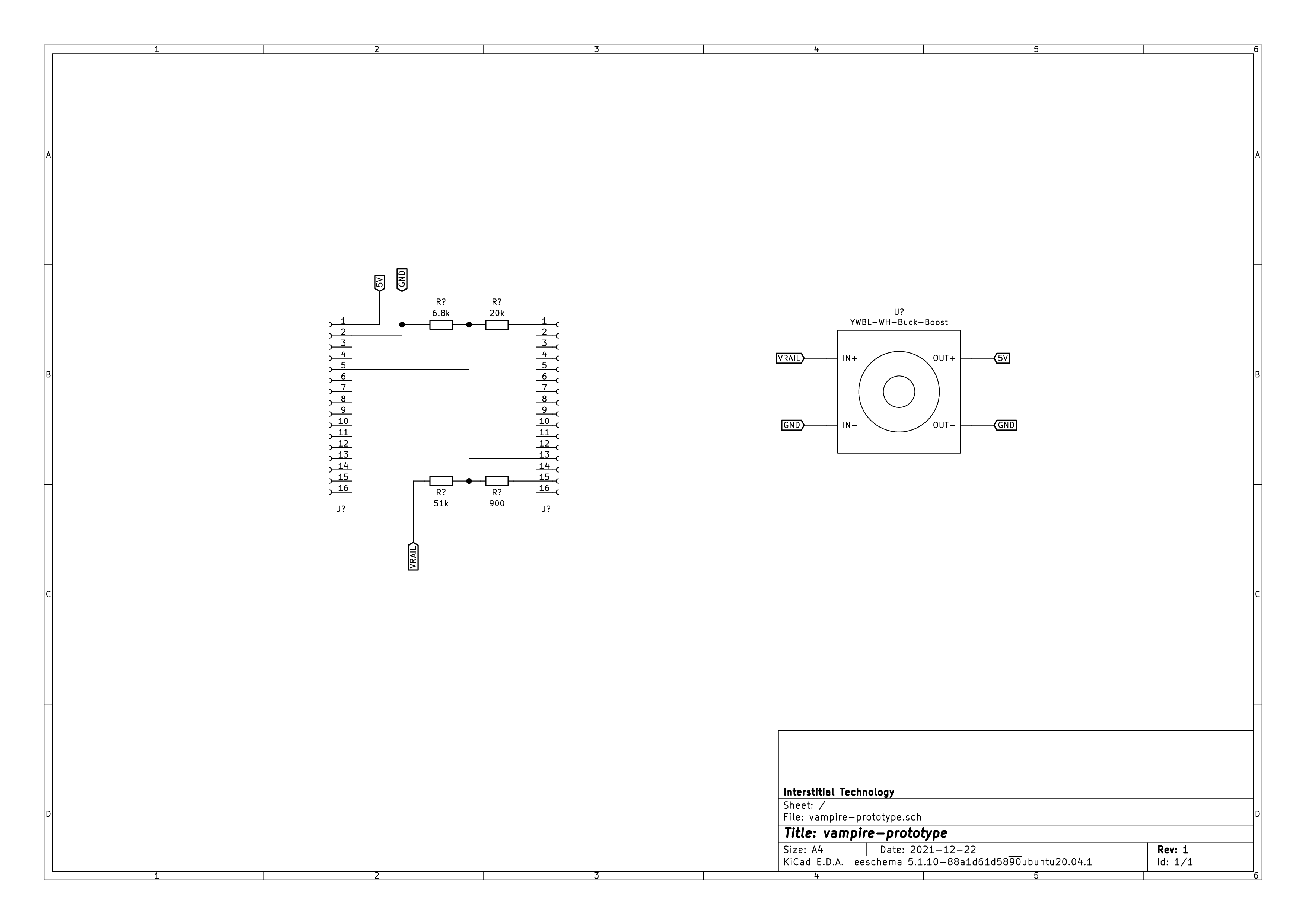
Firmware
The firmware for the T-SIM7000G (ESP32 board) is open source and hosted on our GitHub.
Mounting Platform
The mounting platform is a laser-cut sheet of acrylic (1/8") on which we mount the development boards and antennae; we then mount the platform itself to the plastic standoffs in the enclosure for a solid and consistent assembly. An SVG file for this design is provided in our GitHub repo:
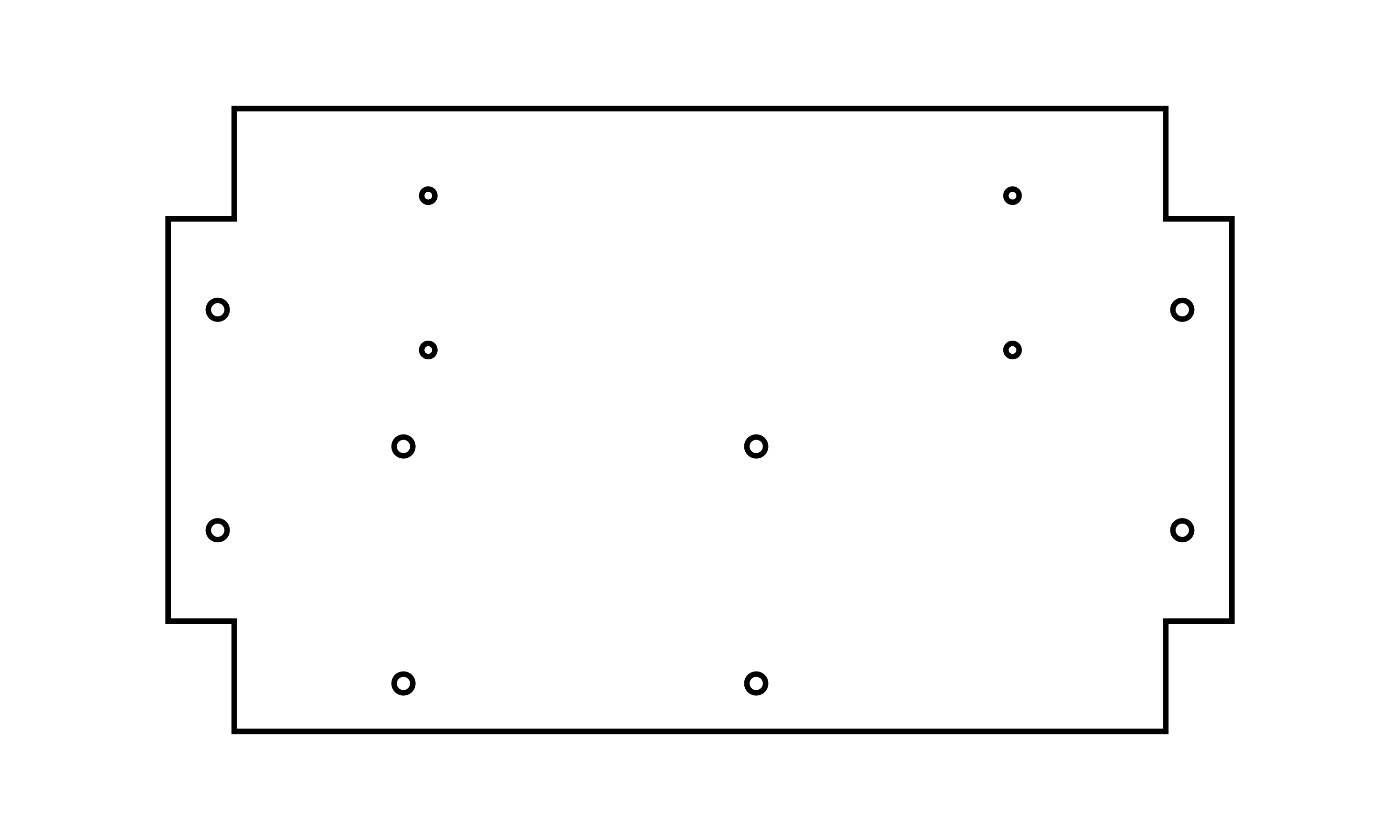
Assembly
To assemble the Vampire prototype:
- Solder 0.1" Dupont headers (female, 16-position) onto the T-SIM7000G, and plugging the interface board into the headers.
- Connect VRAIL, 5V, and GND between the interface board and the buck-boost.
- Mount the T-SIM7000G and the buck-boost converter onto the platform using machine screws.
- Glue the two antennae inside the enclosure. We recommend that the GPS antenna should go on the mounting platform, and the LTE antenna should go on the side wall. Plug both antennae into the T-SIM7000G via their UFL-mini connectors.
- Connect VRAIL and GND to a set of terminal bolts drilled through the side wall of the enclosure. We recommend 3/8" stainless hex bolts with a lock washer for security. Ring terminals then make cable connections easy and reliable.
